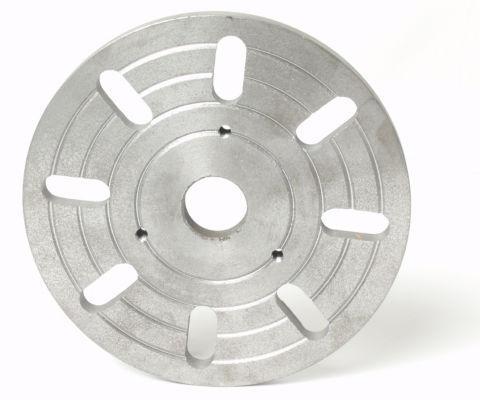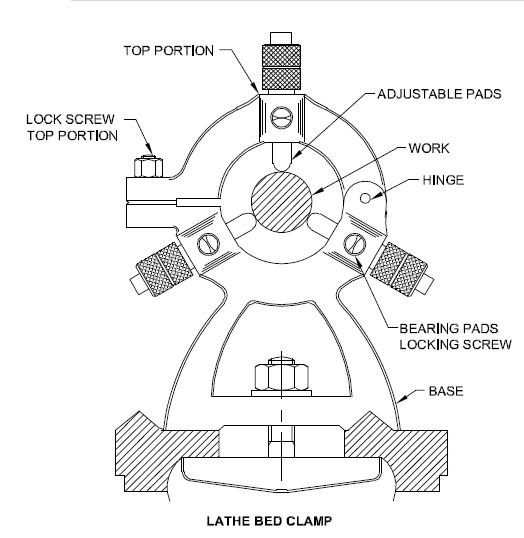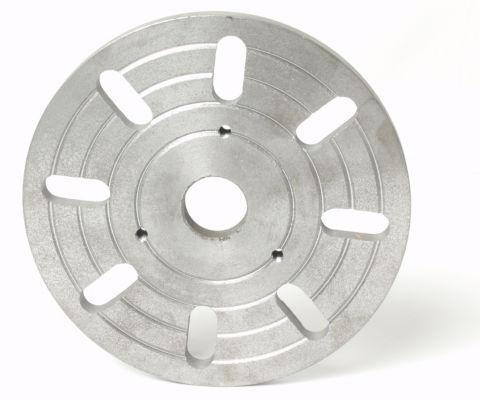A face plate is similar to the magnetic chuck
Faceplates are used to hold work that is too large or of such a shape that it cannot be held in a chuck or between centers. Faceplates are equipped with several slots to permit the use of bolts to secure the work, so that the axis of the workpiece may be aligned with the lathe centers. When work is mounted off – center, a counterbalance should be fastened to the faceplate to prevent imbalance and the resultant vibrations when the lathe is in operation.

holding on cone mandrel and machining between centres
'V' grooves of cast iron pulley have to be fine turned. Which one of the following work holding methods gives the highest concentricity when holding on cone mandrel and machining between centres.
After mounting the face plate on the spindle nose and keeping the spindle in neutral position
When machining irregularly shaped workpiece held in face plate, counterbalancing is done by clamping weights. This is done after mounting the face plate on the spindle nose and keeping the spindle in neutral position.
support long workpiece held in chuck, to perform operations at the overhanging end
A fixed steady rest is used to support long workpiece held in chuck, to perform operations at the overhanging end.

Face plate
A lathe faceplate is a basic workholding accessory for a wood or metal turning lathe. It is a circular metal (usually cast iron) plate which fixes to the end of the lathe spindle. The workpiece is then clamped to the faceplate, typically using t-nuts in slots in the faceplate, or less commonly threaded holes in the faceplate itself.
